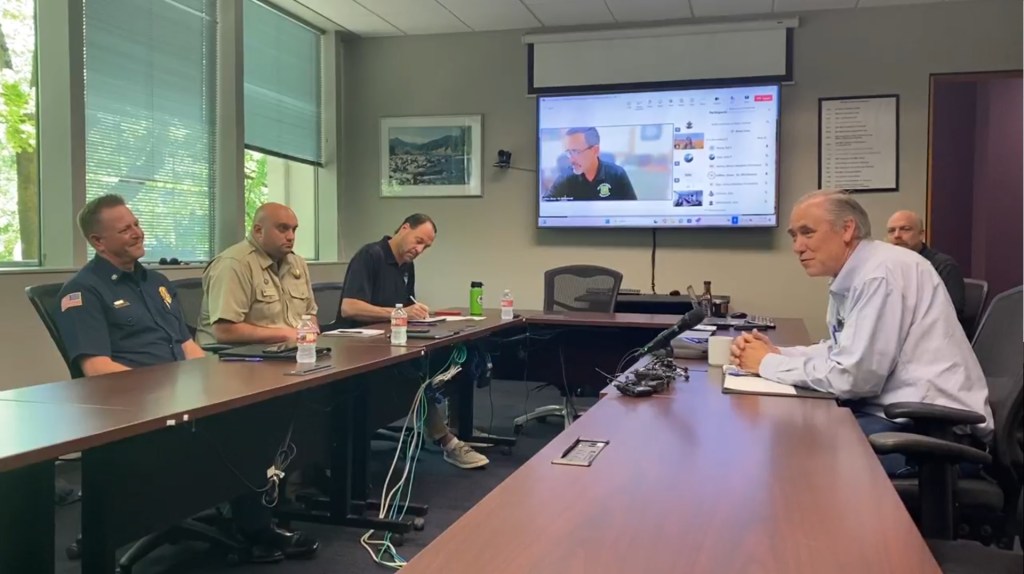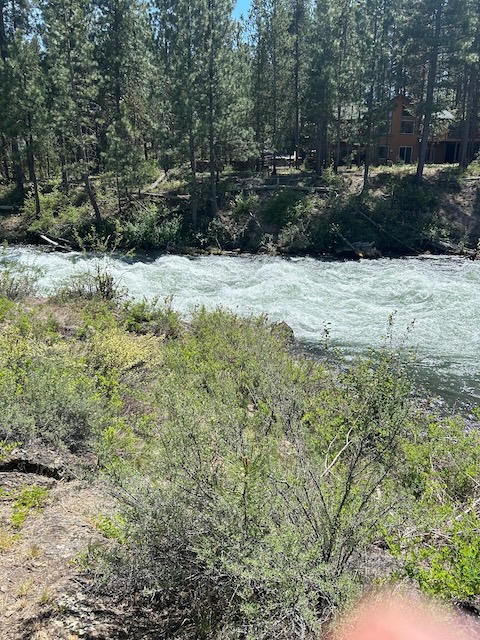Merkley warns of ‘tumultuous’ fire season amid federal cuts to wildfire support
Published 10:01 pm Friday, May 30, 2025

- U.S. Senator Jeff Merkley, right, speaks with fire officials on Friday. (Courtesy Jeff Merkley)
Officials across Oregon say they will have enough firefighters on hand to battle expected wildfires this summer, but warn that other critical support from the federal government may be lacking, making what is already predicted to be a tough fire season even tougher.
That was the message delivered to U.S. Sen. Jeff Merkley, D-Oregon, on Friday at the Northwest Interagency Coordination Center, which coordinates wildfire response across 11 agencies in Oregon and Washington.
Oregon is expected to face drought and above-average heat in the months ahead, setting the stage for a dangerous wildfire season. Last year, more than 1,900 fires burned over 1.9 million acres in the state.
This year, weather forecasters predict even hotter and drier conditions, with all of Oregon at risk for large, costly fires by August and the greatest wildfire risk expected in September and October.
“This is not an issue that’s going to go away,” Merkley said, speaking with fire officials. “We’re going to have to keep investing a lot of federal resources, and a lot of state resources and a lot of vigilance.”
Friday’s briefing offered both warnings and a few cautious reassurances. Among the bright spots: The U.S. Forest Service has nearly completed its firefighter hiring for the region, and expects to have as many wildland firefighters in Oregon and Washington this year as it had last summer.
But where the boots are in place, the backbone of the wildfire response may be lacking, including notable shortages in the support staff who make the fire response system function — dispatchers, planners, weather forecasters, biologists, park rangers and others.
Shane Jeffries, supervisor of the Ochoco National Forest, noted that there are about 1,600 fewer “red card” holders this year — federal staffers certified to assist in wildland firefighting — compared to last year, due to federal cuts. Those workers typically serve in other roles during the year but are called in to help with logistics and operations during fire season.
“They are a really important part of the work that we do,” Jeffries said.
That concern is underscored by a drop in the number of complex incident management teams — high-level groups of federal and state responders that orchestrate major disaster operations. The number of such teams was cut from 44 nationwide last year to 37 this year, a drop of about 16%.
“There is a lot going on,” Merkley said. “This is a tumultuous time. When you’re attacking fires you don’t want tumult, you want consistent support with staffing and equipment.”
The federal staffing shortfall comes amid budget cuts by the Trump administration, which has reduced funding to several federal agencies involved in wildfire response.
Still, Merkley said Friday that he believes recent pressure on the administration may be paying off.
“Right now, I feel that the message has been received by the [Trump] administration that they cannot mess around with federal funding in the context of this fire season,” he said. “They did respond favorably in terms of our concerns — voiced loudly and often — regarding staffing.”
Oregon firefighters have already had a taste of this year’s fire season. The Butte Creek Fire in Wheeler County scorched through 1,800 acres this week before fighters managed to bring it under control.






